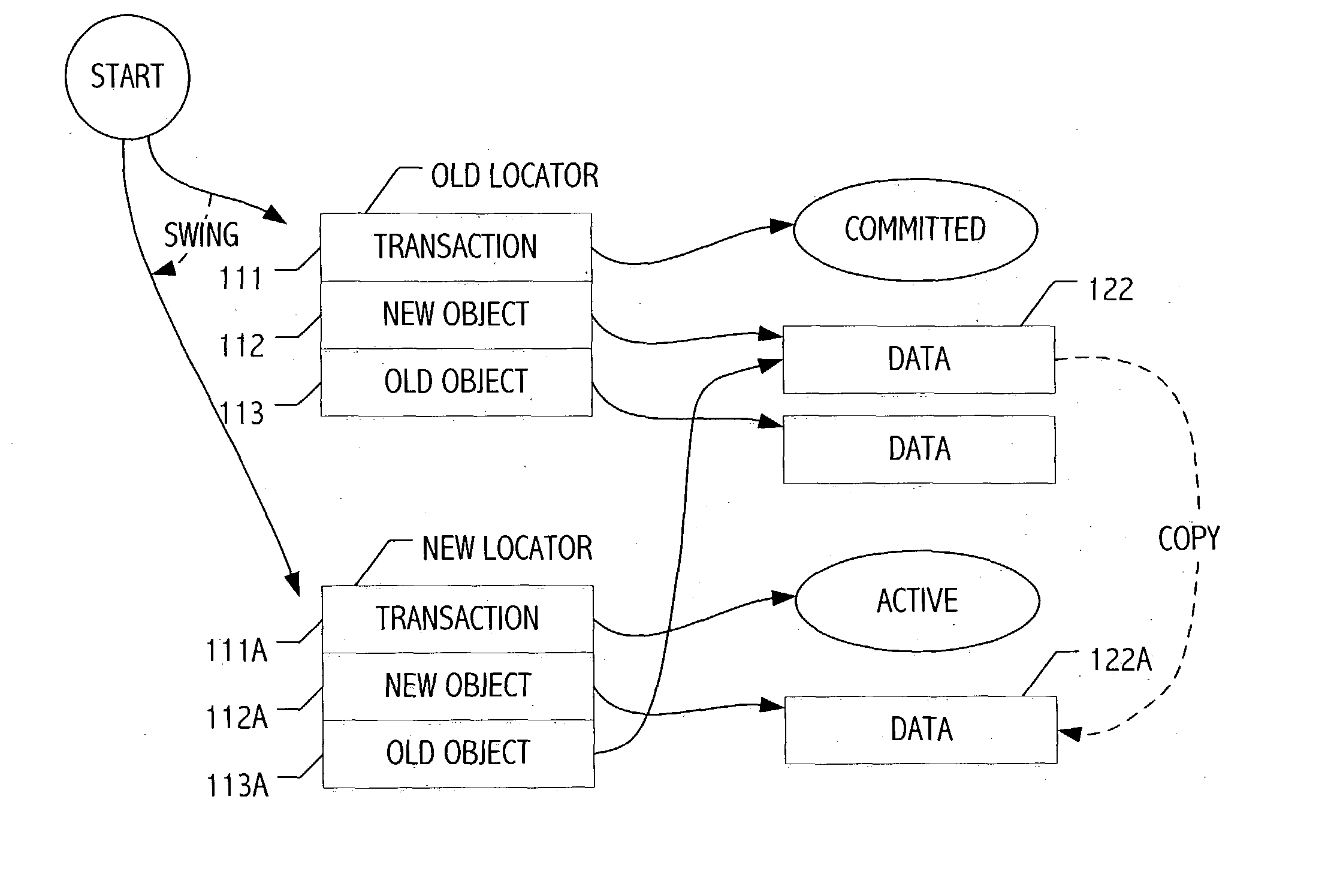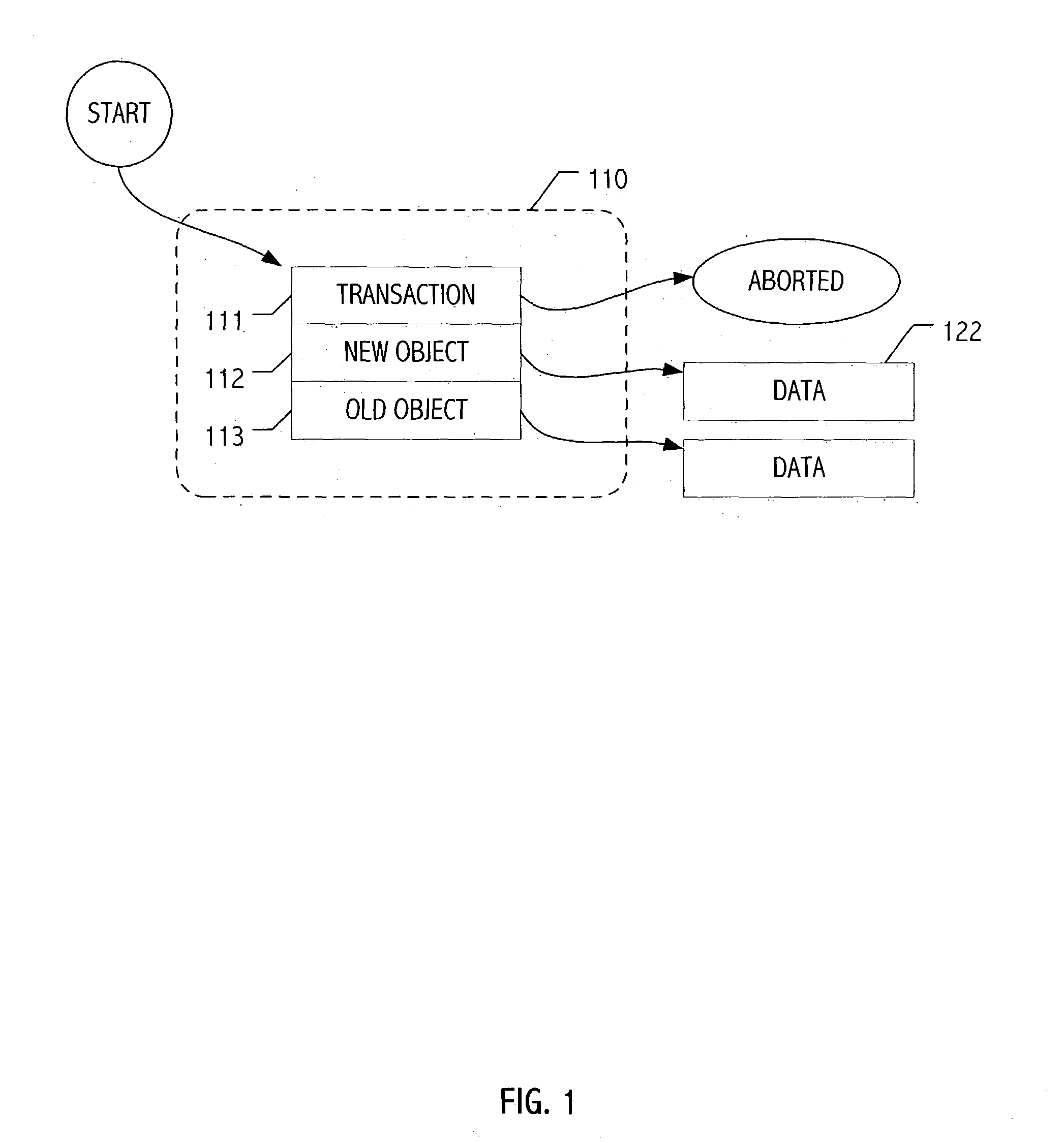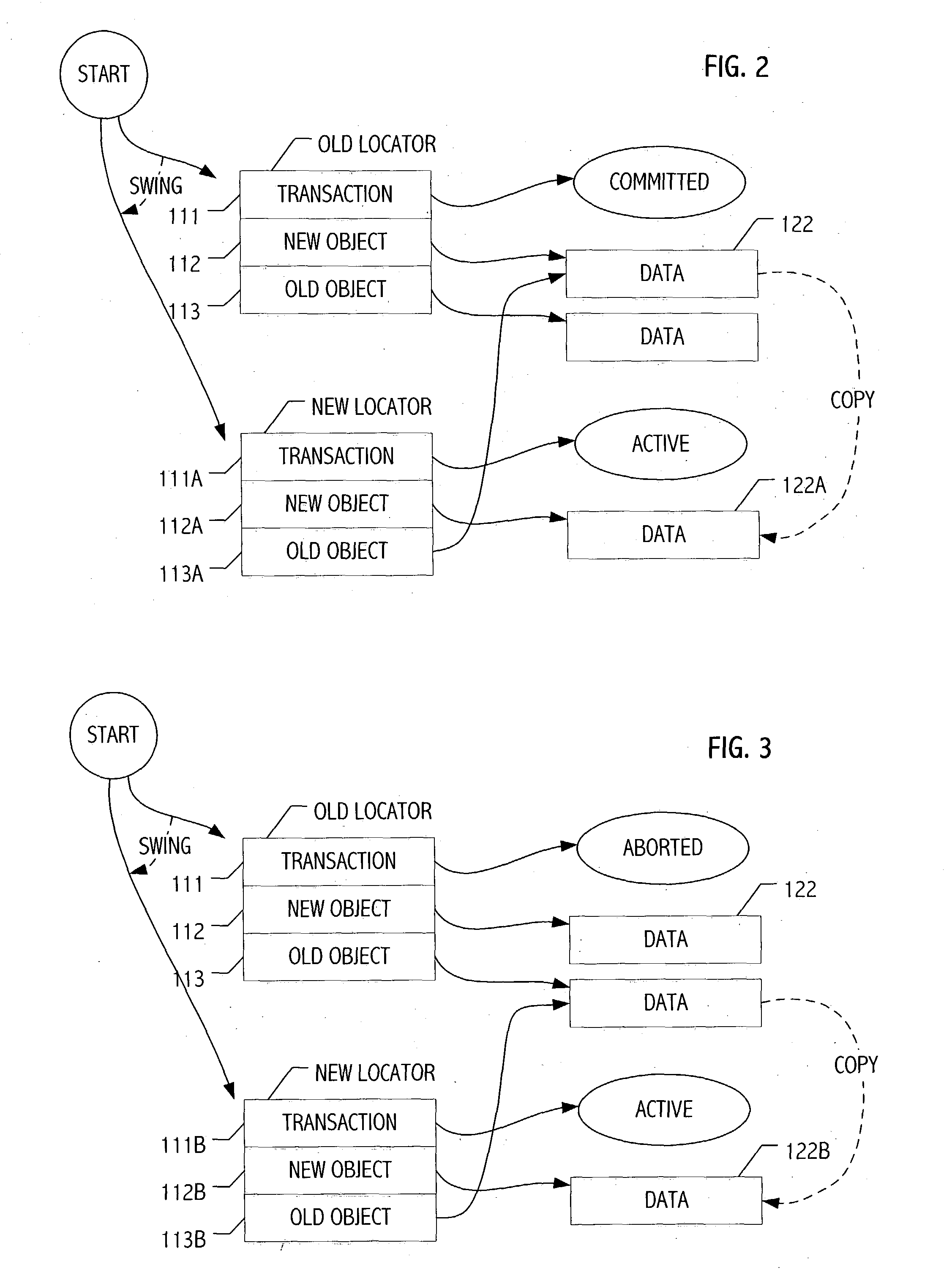Software transactional memory for dynamically sizable shared data structures
a technology of shared data structure and transaction memory, which is applied in the direction of memory adressing/allocation/relocation, multi-programming arrangements, instruments, etc., can solve the problems of another operation from ", difficult to achieve this goal, and high cost of herlihy's original construction in time and spa
- Summary
- Abstract
- Description
- Claims
- Application Information
AI Technical Summary
Problems solved by technology
Method used
Image
Examples
Embodiment Construction
)
[0018] Terminology
[0019] A shared data structure is a collection of data that can be accessed using an associated set of operations. The traditional way to implement a shared data structure is to use mutual exclusion (locks) to ensure that multiple operations do not concurrently access (the same part of) the data structure concurrently. This approach has many disadvantages, as discussed in numerous papers in the literature. A significant amount of research over the last decade or so has focused on designing nonblocking shared data structures, which preclude the use of locks and thereby avoid their associated disadvantages.
[0020] Thus far, two nonblocking conditions, lock-freedom and wait-freedom, have been considered in the literature. In this description, we focus on a new nonblocking condition, obstruction-freedom, that we now define, in part, through contrast with the more conventionally understood nonblocking conditions.
[0021] Lock-freedom: An implementation of an operation is ...
PUM
 Login to View More
Login to View More Abstract
Description
Claims
Application Information
 Login to View More
Login to View More - R&D
- Intellectual Property
- Life Sciences
- Materials
- Tech Scout
- Unparalleled Data Quality
- Higher Quality Content
- 60% Fewer Hallucinations
Browse by: Latest US Patents, China's latest patents, Technical Efficacy Thesaurus, Application Domain, Technology Topic, Popular Technical Reports.
© 2025 PatSnap. All rights reserved.Legal|Privacy policy|Modern Slavery Act Transparency Statement|Sitemap|About US| Contact US: help@patsnap.com



